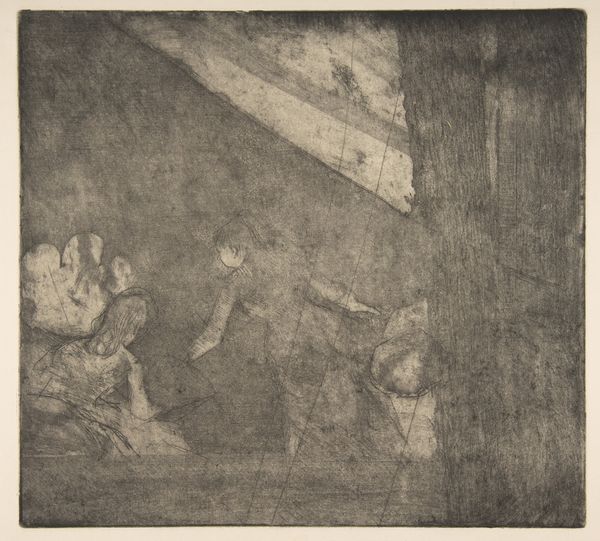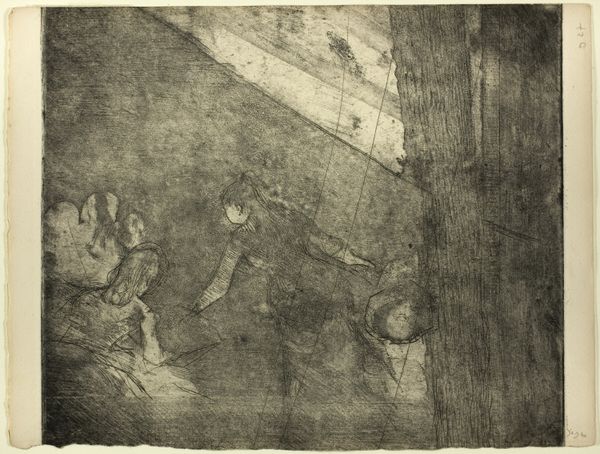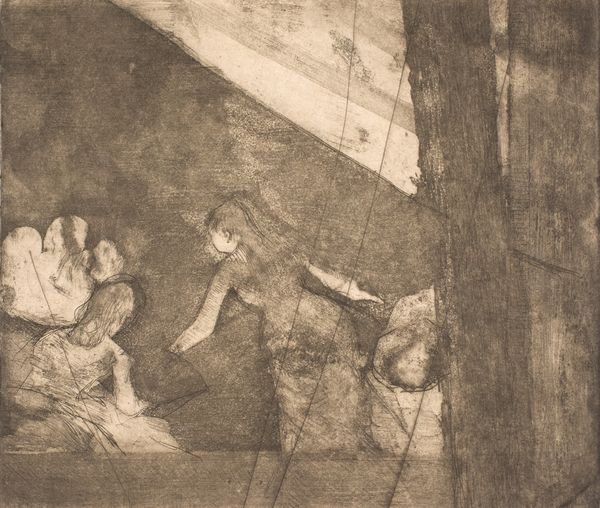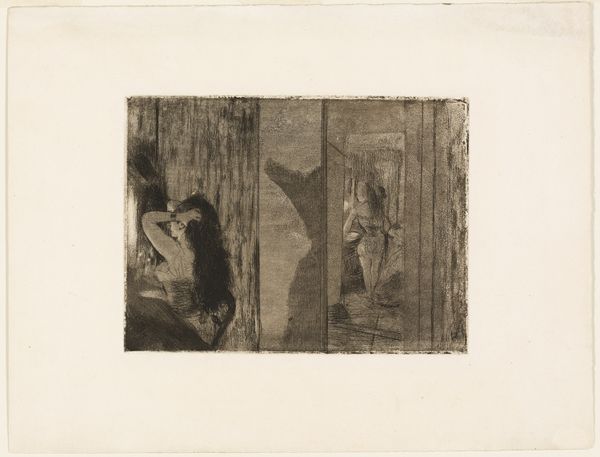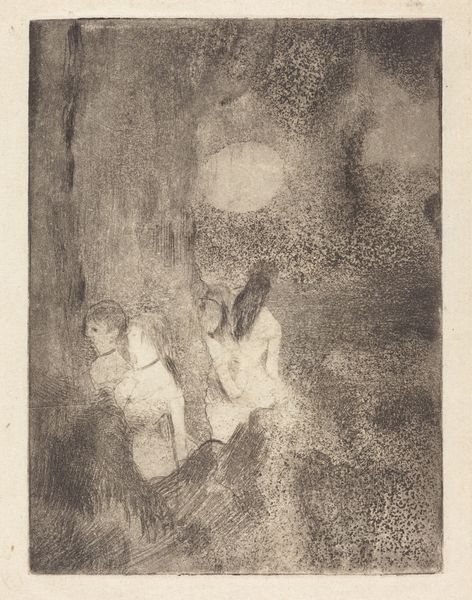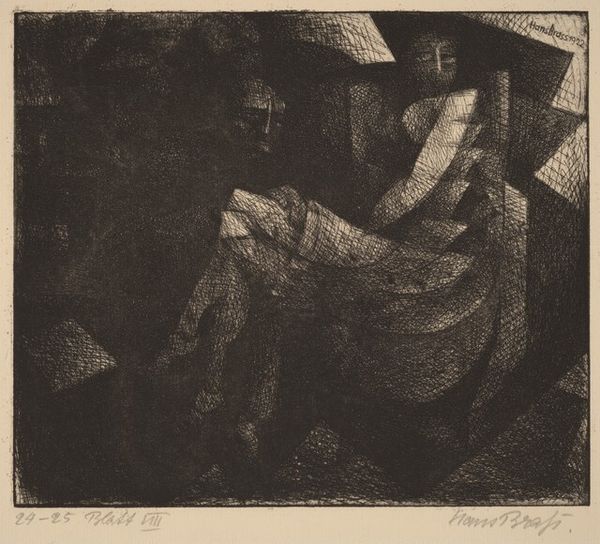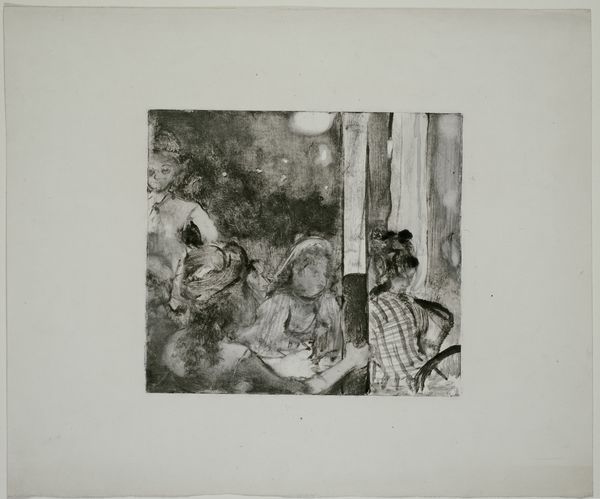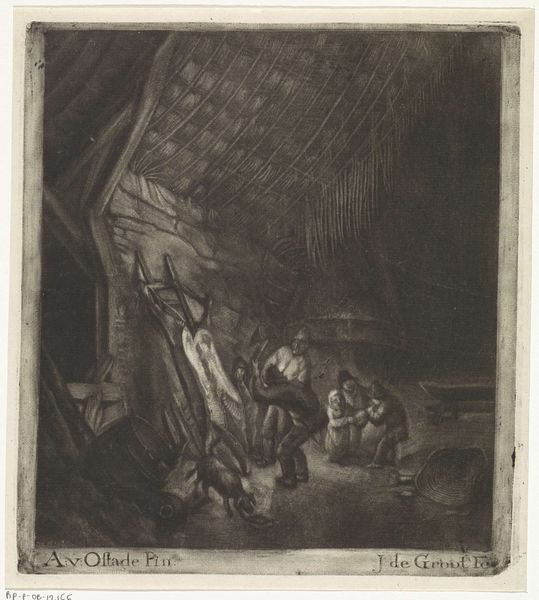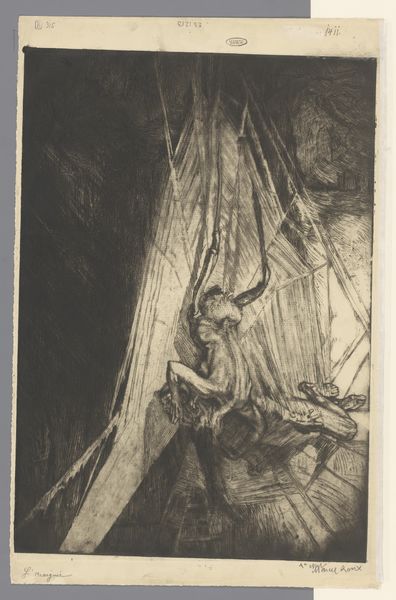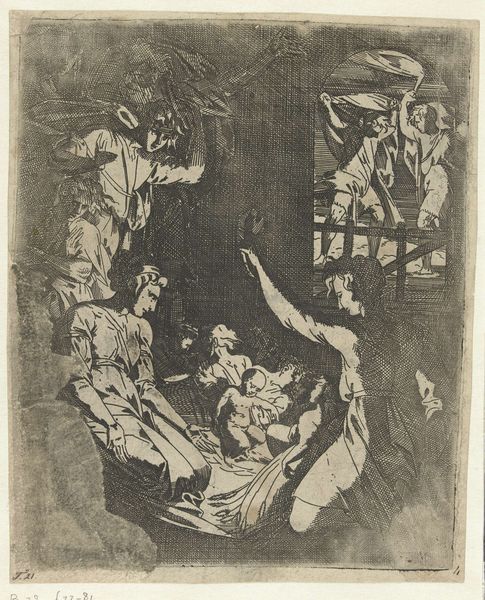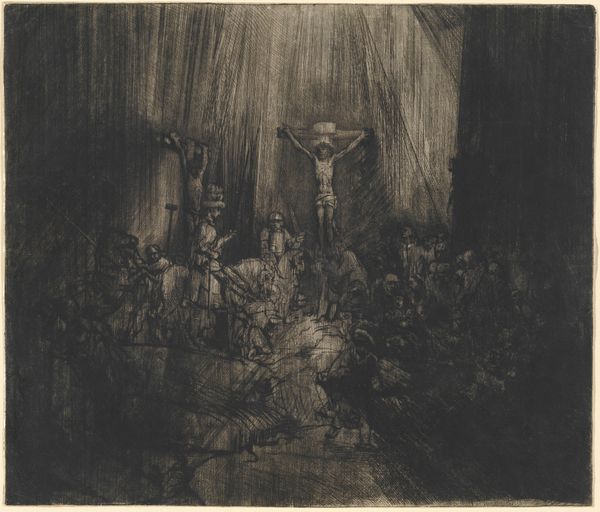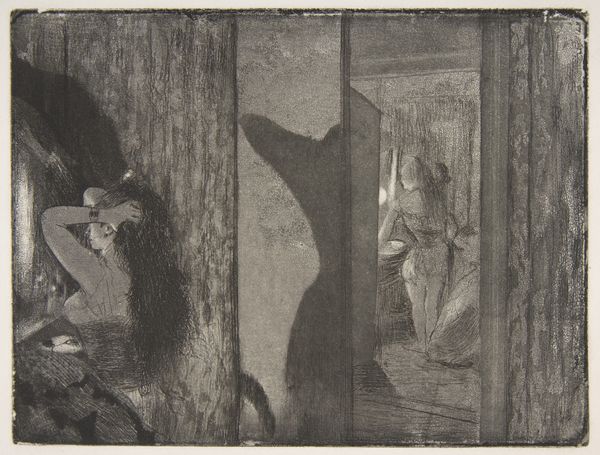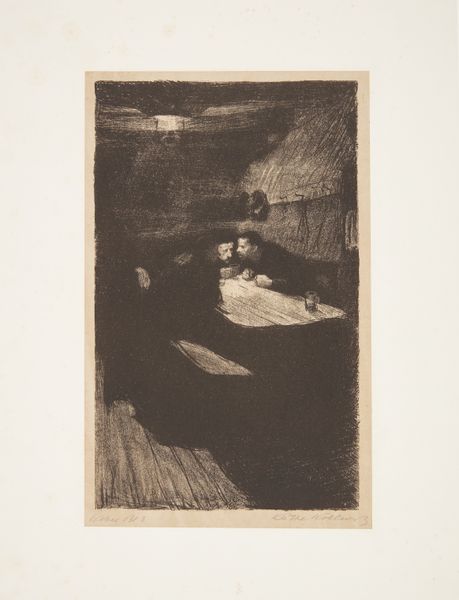
drawing, print, etching, paper
#
drawing
# print
#
impressionism
#
etching
#
landscape
#
figuration
#
paper
Dimensions: 265 × 294 mm (image/plate); 326 × 492 mm (sheet)
Copyright: Public Domain
Curator: Edgar Degas's "At the Café des Ambassadeurs," dating from 1879 to 1880, presents an enigmatic glimpse into Parisian nightlife. Crafted using etching, this piece showcases Degas's exploration of modernity through the lens of printmaking. It's currently housed here at the Art Institute of Chicago. Editor: My first impression? It feels incredibly…moody. Like catching a fleeting moment in a smoky, dimly lit room. The figures seem caught between clarity and shadow, a whisper of a story. Curator: Indeed. The stark contrast achieved through the etching technique underscores this. Notice the compositional strategy: Degas's keen awareness of spatial arrangement—the figures distributed non-symmetrically creates dynamic tension. Editor: Absolutely! There’s almost a stage-like quality about the setting, the figures positioned as performers, or perhaps, nonchalant observers within the café's vibrant microcosm. It’s as if Degas handed us backstage passes to the human drama! Curator: Consider the gestural quality of the lines, particularly around the faces. These are not merely portraits but attempts to capture character, mood, and psychological states. One could argue he presages cinematic narrative techniques. Editor: It's more than a little voyeuristic too, wouldn't you agree? Like we’re intruding on a private interaction, a secret shared in hushed tones under the glow of those gas lamps. Curator: The use of light and shadow transcends simple representation. The bright glare may act to reveal as well as conceal, speaking volumes about class and societal roles within Impressionist artwork. The light might also subtly symbolize themes like revelation and exposure, ideas constantly negotiated in fin-de-siècle art. Editor: Exactly, there's a cinematic allure in that the whole tableau feels like a fragment from a bigger narrative; a split second from someone's lifetime, beautifully rendered. Curator: Through an intricate framework of lines and tonal graduations, the setting breathes with a palpable vitality, a microcosm encapsulating life, intimacy, and transient reality. It serves as both a documentation of and a critical inquiry into modernity. Editor: Degas managed to squeeze poetry into a cityscape… or perhaps, capture life and transform it into visual haikus! His gift captures a split-second narrative where stories begin and secrets linger on the paper's very grain. Bravo, sir!
Comments
No comments
Be the first to comment and join the conversation on the ultimate creative platform.
